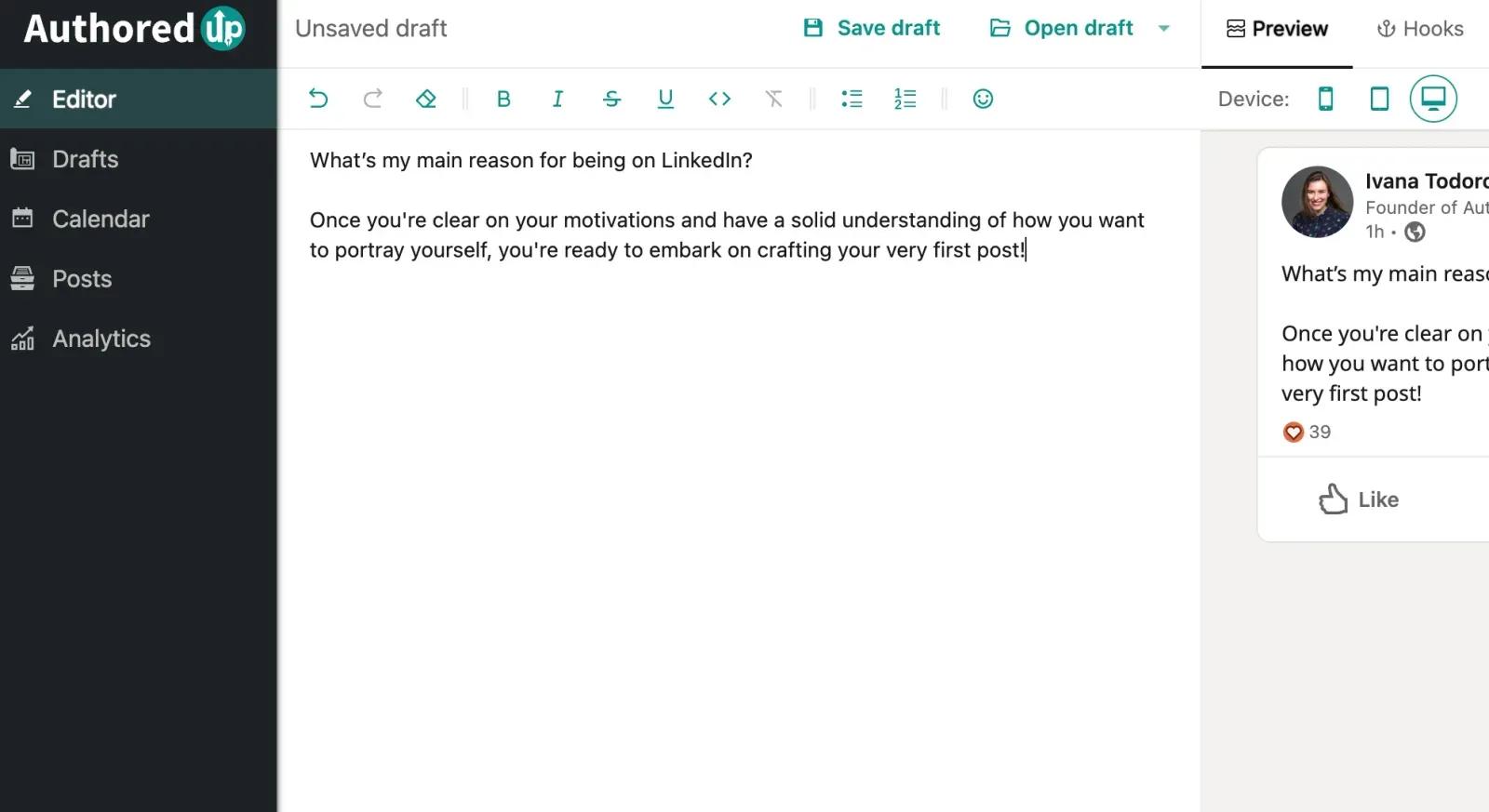In today's fast-paced professional world, LinkedIn has become the ultimate platform for building and showcasing your personal brand.
But with so many tools available, how do you choose the one that will truly elevate your LinkedIn presence?
In this post, we'll dive into three of the top contenders — Scripe, AuthoredUp, and Taplio. We'll break down their features, strengths, and weaknesses to help you decide which tool best suits your LinkedIn branding strategy.
This post was inspired by Simon Gorlak's comprehensive reviews, which can be found here.
Scripe: The All-in-One AI-Powered Content Creation Tool
Scripe stands out as a versatile content creation tool for LinkedIn, particularly for those who want to automate and streamline their content production.
It’s an AI-powered platform that transforms voice, video, and text inputs into personalized, high-quality posts, making it ideal for freelancers, entrepreneurs, and marketing teams who want to build their personal brand on LinkedIn with minimal effort.

Key Features:
- AI Content Assistant: Allows users to create posts that maintain their unique voice, with options for personal, educational, or business-focused content.
- Voice Memo Integration: Users can record voice messages that Scripe then converts into ready-to-publish posts, making it a great option for those who prefer speaking over writing.
- Content Calendar: Automates post scheduling, allowing users to plan their content weeks or months in advance.
- Advanced Analytics: Provides in-depth insights into your LinkedIn performance, helping you refine your strategy for maximum impact.
Who Should Use Scripe?
Scripe is best for users who want a user-friendly tool that simplifies the content creation process with advanced AI features. It’s especially useful for those who struggle with writing or who need to maintain a consistent LinkedIn presence without dedicating too much time to content creation.
AuthoredUp: Rich Post Formatting
AuthoredUp offers some valuable features, particularly for those who already have a solid content plan. However, its limitations become apparent when you need more than just formatting and scheduling.
Without the advanced AI capabilities and deep analytics that Scripe provides, AuthoredUp might leave you wanting more if you're serious about maximizing your LinkedIn impact.

Key Features:
- Content Recycling: Allows users to easily republish and optimize their content, ensuring that their posts continue to reach new audiences without needing constant new material.
- Content Inspiration: Similar to Scripe, AuthoredUp provides content ideas, though its interface is slightly less intuitive.
- Post Formatting Tools: Helps format posts for maximum readability and engagement, though it lacks some of the more advanced AI features of Scripe.
Who Should Use AuthoredUp?
AuthoredUp is ideal for users who are primarily focused on content automation and optimization rather than content creation from scratch. It’s a good choice for those who already have a lot of content and want to automate posting it on LinkedIn.
However, AuthoredUp lacks some of the advanced analytics that Scripe offers. While it’s great for formatting and scheduling posts, users who want in-depth data on their LinkedIn performance might find themselves needing a separate tool.
Taplio: Powerful Yet Complicated
Taplio brings a lot to the table, especially if you're focused on networking and community engagement. But with a steeper learning curve and a more complex interface, it may not be the best choice for those who want a straightforward, efficient tool.

Key Features:
- Advanced Content Creation Tools: While not as user-friendly as Scripe, Taplio offers powerful features for users who are comfortable with a more complex interface.
- Engagement and Networking: Use features to find and nurture leads, comment on posts, and build relationships within your LinkedIn network.
- Analytics: Monitor your LinkedIn performance with comprehensive analytics to understand what works and refine your strategy.
Who Should Use Taplio?
Taplio may appeal to users who prefer a community-driven tool with extensive analytics. While Taplio offers robust features, it requires a higher learning curve, which might not be ideal for those looking for a more straightforward, user-friendly solution.
For users who prioritize ease of use and efficiency in content creation, Taplio's complexity could be a drawback, making other tools like Scripe a more appealing choice.
Which Tool Is Right for You?
The best tool for you depends on your priorities:
- Scripe is ideal for users looking for an AI-powered solution with advanced content creation features like voice-to-text and carousel generation. It’s perfect for users who want to create content quickly and efficiently while still having access to deep analytics to track their performance.
- AuthoredUp is a better choice for users who already have a clear content strategy but need a tool to fine-tune the appearance of their posts and automate the posting calendar.
- Taplio is the go-to tool for those who prioritize engagement and networking. It’s a fantastic option, but it might fall short if you're looking for advanced content creation features.
When comparing Scripe, AuthoredUp, and Taplio, it’s clear that each tool caters to different types of LinkedIn users.
Ultimately, choosing the right tool comes down to your unique needs and goals for LinkedIn. For an in-depth comparison, be sure to check out Simon Gorlak’s full review of the tools.
Now, if your goal is content creation, don’t just take our word for it — try Scripe for yourself and see how it can transform your LinkedIn presence!

